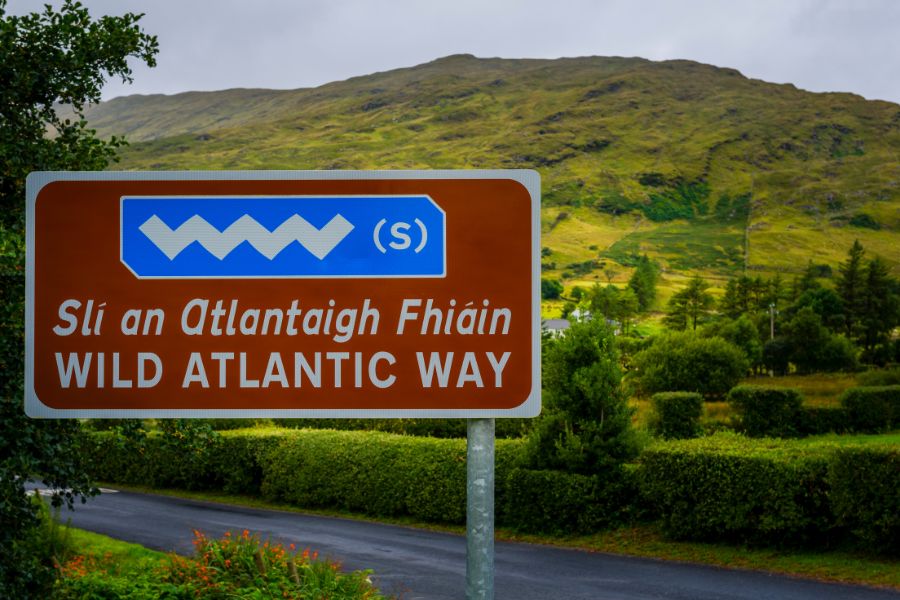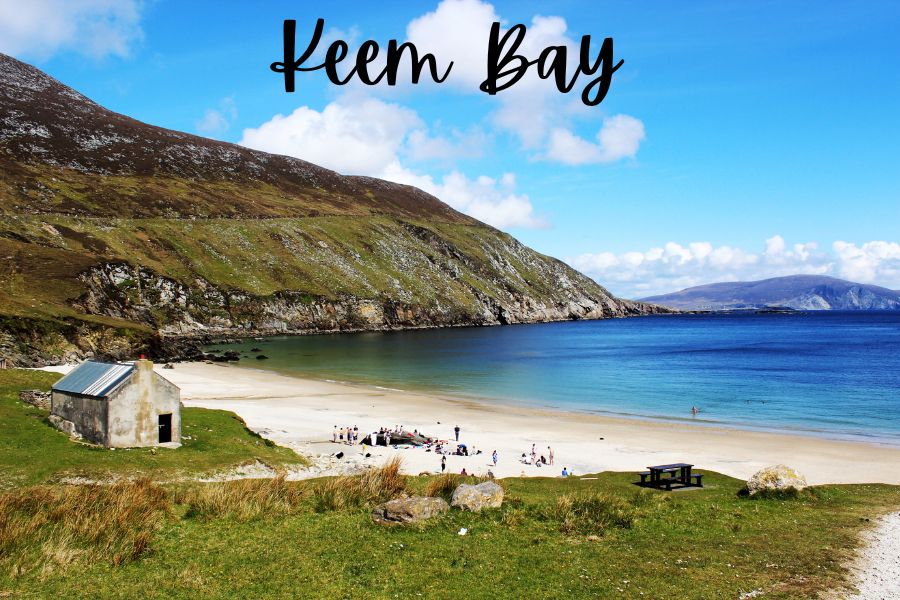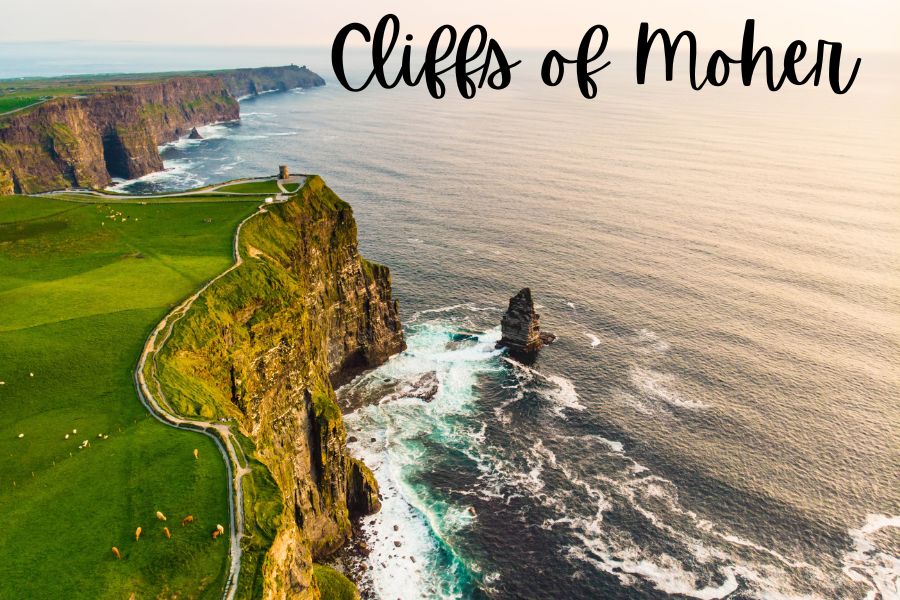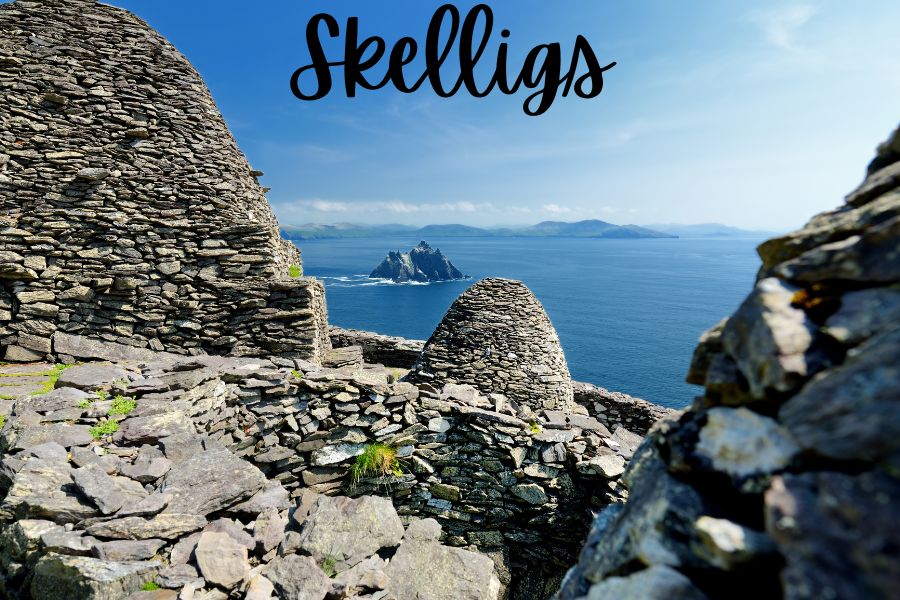Wild Atlantic Way Discovery Point

Having lived near Donegal I was lucky enough to be able to experience one of the best road trips on my doorstep, The Wild Altlantic Way. So come ‘Take the Wild Road’ with me and explore in depth the Wild Atlantic Way Road Trip, Ireland.
Did you know that The Wild Atlantic Way, Ireland and Belfast, Northern Ireland have been included in National Geographic’s Cool List 2024! Donegal, Ireland has also been listed in Lonely Planets Best in Travel list 2024!
So what is the Wild Atlantic Way?
The Wild Atlantic Way is a long and scenic coastal driving route in Ireland that stretches along the country’s western coastline. It covers approximately 1,600 miles (2,500 kilometers) and offers breathtaking views of the rugged Atlantic coastline, dramatic cliffs, picturesque villages, and beautiful beaches. It’s one of the longest defined coastal routes in the world, providing travelers with opportunities for outdoor activities, cultural experiences, and exploring Ireland’s natural beauty. The Wild Atlantic Way is known for its diverse landscapes, cultural heritage, and welcoming communities, making it a popular destination for tourists seeking an authentic Irish experience.
Wild Atlantic Way 15 Signature Discovery Points Map:

15 Signature Discovery Points along the Wild Atlantic Way
The Wild Atlantic Way in Ireland features 188 Discovery points. But there are 15 special Signature Discovery Points that highlight some of the most spectacular and iconic locations along the route. These points offer visitors unique and memorable experiences. To make it easier to navigate the route can be split down over 6 particular areas.
Here are the 15 Signature Discovery Points along the Wild Atlantic Way:
County Donegal:

Malin Head, County Donegal: The northernmost point of the Wild Atlantic Way, offering stunning coastal views and the iconic Malin Head Tower.
Slieve League, County Donegal: Slieve League is celebrated for its stunning natural beauty, with dramatic cliffs that plunge into the Atlantic Ocean. The highest point, known as “One Man’s Path,” stands at a staggering 601 meters (1,972 feet), making it one of the highest sea cliffs on the continent.
Fanad Head, Co Donegal: Miles of golden, sandy beaches lapped by turquoise waves. One of the iconic features of Fanad Head is the Fanad Lighthouse, a historic lighthouse that has been guiding ships safely through these treacherous waters since 1817. The lighthouse is still operational and adds to the area’s charm.
County Sligo:

Mullaghmore Head, County Sligo: A picturesque coastal village with stunning views of the ocean and Ben Bulben mountain. Mullaghmore Head is a destination that offers a harmonious blend of natural beauty, outdoor activities, coastal village charm, and historical significance.
County Mayo:

Downpatrick Head, County Mayo: Features the Dun Briste sea stack, Downpatrick Head is steeped in folklore and history. It is said to be the legendary burial place of St. Patrick’s charioteer, and a stone cairn is believed to mark the spot. There’s also a holy well known for its healing properties.
Keem Bay, Achill Island, County Mayo: Due to its remote location, Keem Bay is often considered one of the hidden gems along the Wild Atlantic Way. Its tranquility and the absence of major tourist infrastructure make it a peaceful retreat for visitors.
County Galway:

Killary harbour, County Galway: A glacial fjord, Killary Harbour stretches for an impressive 16km and is over 45m deep.
Derrigimlagh, County Galway: The area is characterized by peat bogs, heathlands, and sandy shores. It is an ideal spot for nature enthusiasts, hikers, and photographers.
County Clare:

Cliffs of Moher, County Clare: One of the most famous attractions in Ireland. The Cliffs of Moher are renowned for their stunning natural beauty and dramatic scenery. The rugged coastline, crashing waves, and the sheer scale of the cliffs make for a spectacular and awe-inspiring sight.
Loop Head, County Clare: Loop Head is an outstanding destination for those seeking natural beauty, outdoor adventures, and a taste of Irish coastal life. Whether you’re interested in exploring the lighthouse, observing wildlife, or taking in the dramatic coastal landscapes,
County Kerry:

Blasket Islands, County Kerry: The Blasket Islands are a place of captivating beauty and cultural significance. They offer a unique opportunity to connect with Ireland’s literary and linguistic heritage while enjoying the rugged charm of the Irish coastline and its abundant wildlife.
Skellig, County Kerry: A UNESCO World Heritage site with ancient monastic ruins and puffin colonies. The Skellig Islands are a unique blend of history, culture, and nature. Skellig Michael, in particular, offers a chance to step back in time and explore the monastic heritage of Ireland.
County Cork:

Dursey Island, County Cork: You can visit via Ireland’s only cable car service. Dursey Island is known for its unspoiled and rugged beauty. The island is sparsely populated, and its isolation offers a peaceful and untouched environment. It’s a perfect destination for those seeking tranquility and solitude.
Mizen Head, County Cork: It is known for its stunning coastal landscapes, a visitor center, and a suspension bridge that provides spectacular views of the Atlantic Ocean.
Old Head of Kinsale, County Cork: The Old Head of Kinsale is a place of natural beauty and historical significance, providing a memorable experience for golfers, nature enthusiasts, history buffs, and those who simply appreciate stunning coastal landscapes
These Signature Discovery Points offer a variety of experiences and showcase the natural beauty and cultural richness of the Wild Atlantic Way in Ireland.
Here are some very useful maps and guidebooks to start planning your Wild Atlantic Way adventure
In and around Donegal? Check out my ‘Best Afternoon Tea in Donegal‘ post


